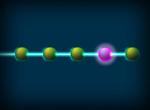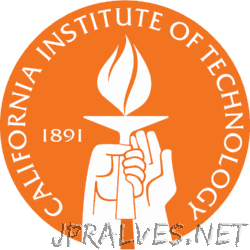Other

“Quantum computers of the future may ultimately outperform their classical counterparts to solve intractable problems in computer science, medicine, business, chemistry, physics, and other fields. But the machines are not there yet: They are riddled with inherent errors, which researchers …

“Quantum computers of the future hold promise in solving all sorts of problems. For example, they could lead to more sustainable materials, new medicines, and even crack the hardest problems in fundamental physics. But compared to classical computers in use …

“In California, thousands of miles of fiber optic cables crisscross the state, providing people with internet. But these underground cables can also have a surprising secondary function: they can sense and measure earthquakes. In a new study at Caltech, scientists …

“Sweat, like blood, can tell us a lot about a person’s health. And conveniently, it’s a lot less invasive to collect. This is the premise behind the wearable sweat sensors developed by Wei Gao, assistant professor of medical …

“A newly created real-life Transformer is capable of reconfiguring its body to achieve eight distinct types of motion and can autonomously assess the environment it faces to choose the most effective combination of motions to maneuver. The new robot, dubbed …

“Quantum computing, just like traditional computing, needs a way to store the information it uses and processes. On the computer you’re using right now, information, whether it be photos of your dog, a reminder about a friend’s birthday …

“A space solar power prototype that was launched into orbit in January is operational and has demonstrated its ability to wirelessly transmit power in space and to beam detectable power to Earth for the first time. Wireless power transfer was …

“Using a “spooky” phenomenon of quantum physics, Caltech researchers have discovered a way to double the resolution of light microscopes. In a paper appearing in the journal Nature Communications, a team led by Lihong Wang, Bren Professor of Medical Engineering …

“When two black holes collide into each other to form a new bigger black hole, they violently roil spacetime around them, sending ripples called gravitational waves outward in all directions. Previous studies of black hole collisions modeled the behavior of …

“Scientists unveil a unified theory for rocky planet formation A new theory for how rocky planets form could explain the origin of so-called “super-Earths”—a class of exoplanets a few times more massive than the Earth that are the most …

